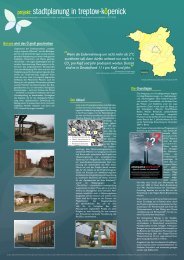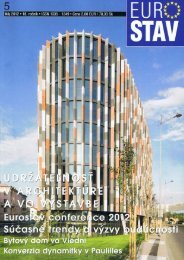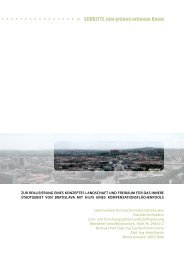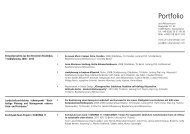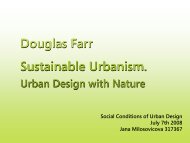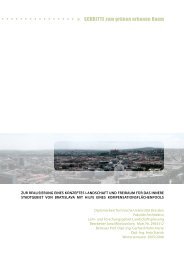Thesis document - Jana Milosovicova - Urban Design English
Thesis document - Jana Milosovicova - Urban Design English
Thesis document - Jana Milosovicova - Urban Design English
- No tags were found...
You also want an ePaper? Increase the reach of your titles
YUMPU automatically turns print PDFs into web optimized ePapers that Google loves.
This implies that there is an acute need to understand:• ‘Solar radiation’ – as a desired energy flow; the priority in summer months howeverbeing to prevent overradiation and out of it resulting overheating. This implies thatthe urban form shall be compact and the spaces shaded. However, since built structuresand anthropogenic heat release contribute significantly to the city’s atmospherewarming, the compactness must conform to the ability of the given urbanenvironment to tackle the heat loads by providing sufficient evaporative cooling andnatural ventilation.• ‘Water’ – as rainfall that is to be kept on ground in water bodies and plants andevapotranspired into the adjacent atmosphere, while having significant coolingeffect;• ‘Vegetation’ not only as a component in parks – more than that, all natural as wellas man-made surfaces should possibly be vegetated;• ‘Ventilation’ – the air permeability must be provided at each city’s, district’s, urbanblock’s and building’s level. Here, the orientation of the streets, the urban form –density/compactness and geometry play a distinctive role.“Re-greening cities withan aggressive policy: notleftovers but priority.”(Katzschner and Katzschner2008)Based on this knowledge, the <strong>Thesis</strong> produced a comprehensive set of Climate-Sensitive<strong>Urban</strong> <strong>Design</strong> Guidelines. Briefly summarized, “Climate-Sensitive <strong>Urban</strong> <strong>Design</strong>” meansthat shading of open space in summer months is provided with the help of vegetation,built elements and appropriate urban geometry; permeable, high albedosurfaces are used where soil sealing is unavoidable; water, particularly rainwater, isconsidered being valuable element and as such is widely used in open space to providedesired cooling effect; vegetation is planted wherever possible, in open spacesas well as on the roofs and façades of buildings; ventilation channels are providedto allow the flow of cooler air from the surrounding countryside into the city centre, orbetween climatic compensation areas and impact areas; and finally yet importantly, eachurban district and urban block features sufficient natural ventilation provisions.These features were then applied and visualized in the design for a Case Study urbanproject, the Berlin’s Heidestrasse/Europacity, showing that it is possible to achieve moderate-to high density urban areas that, with particular design provisions, can effectivelyinfluence and alleviate the UHI at the local, district level.Unlike in other sources, the focus of this <strong>Thesis</strong> was not on buildings’ energy efficiencyand on motorized traffic reduction, but on buildings’ masses, urban form, and the thermaland climatic effects of urban areas as such.As the <strong>Thesis</strong> shows, many factors have to be considered before deciding on the appropriate,climate-sensitive urban form and design. Yet, besides the general aspectsdiscussed in the <strong>Thesis</strong>, the specific type of measures will depend on the particular geographicallocation and local conditions, such as terrain inclination, precipitation, etc.“Prescribing urban form to mitigate and adapt to climate change simultaneously isextremely challenging, if not impossible. Although mitigating climate change is bestachieved by designing settlement patterns that do not contribute to more GHG releasesdue to the excessive use of energy (…), adapting to climate change involves a morecomplex set of issues (Pizarro 2009, p. 42)”. This <strong>Thesis</strong> responded to this challenge andattempted to present a complex set of best urban design practices that will help citiesadapt to extreme temperatures and to mitigate the climate change.The aim has been to address not only urban design professionals and planning communitiesbut also other stakeholders in urban development; and to present and highlightthe applicability for any country or city in the cool moderate climate zone.4 Conclusions59



